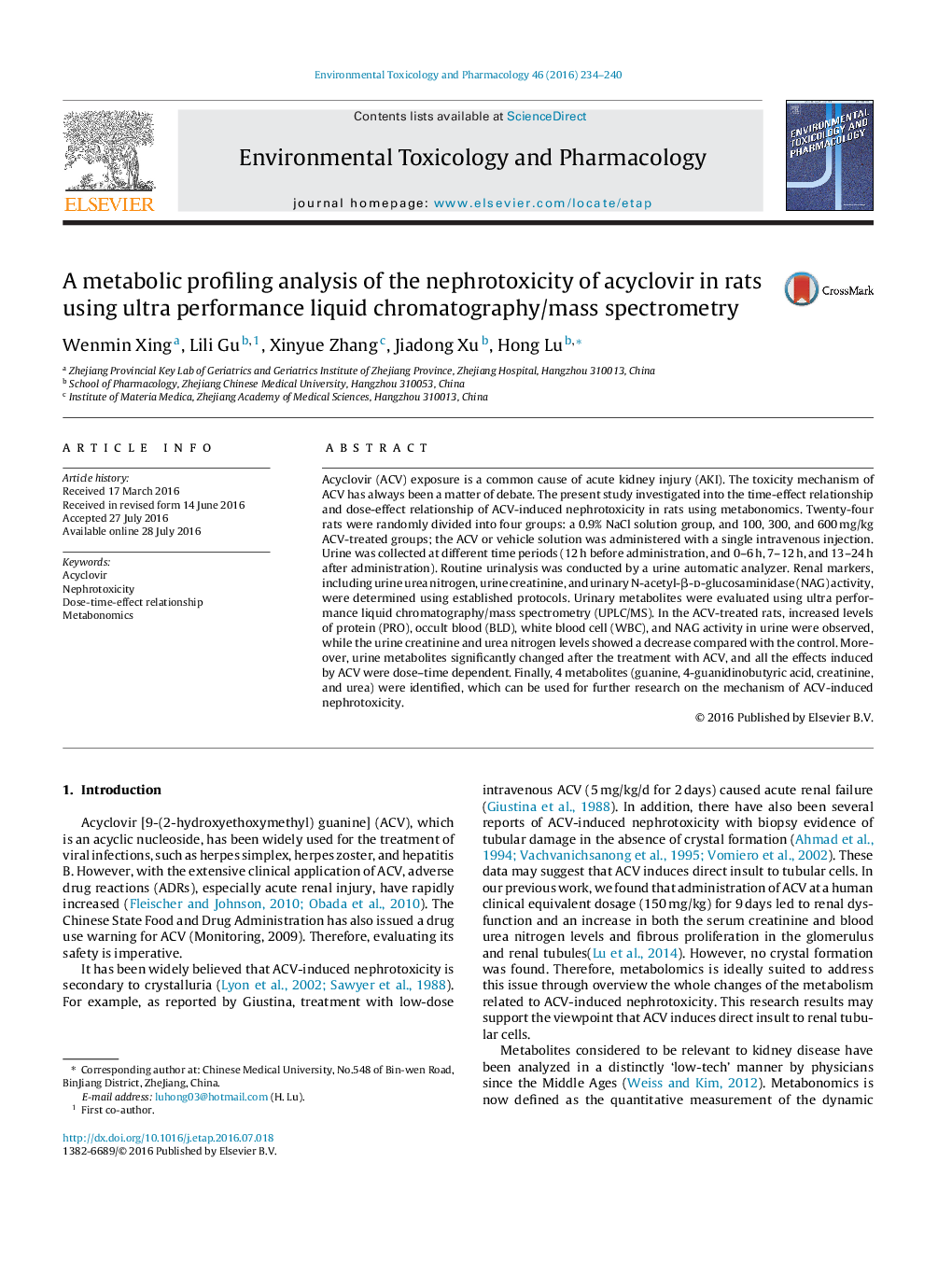| کد مقاله | کد نشریه | سال انتشار | مقاله انگلیسی | نسخه تمام متن |
|---|---|---|---|---|
| 2582833 | 1561698 | 2016 | 7 صفحه PDF | دانلود رایگان |
• Our metabonomics analysis provided an approach for elucidating ACV induced nephrotoxicity.
• ACV can induce nephrotoxicity within a certain range of treating time and dose.
• We found multiple metabolites related to renal injury.
• Findings found that guanine is one of ACV’s metabolic products related to ACV induced nephrotoxicity.
Acyclovir (ACV) exposure is a common cause of acute kidney injury (AKI). The toxicity mechanism of ACV has always been a matter of debate. The present study investigated into the time-effect relationship and dose-effect relationship of ACV-induced nephrotoxicity in rats using metabonomics. Twenty-four rats were randomly divided into four groups: a 0.9% NaCl solution group, and 100, 300, and 600 mg/kg ACV-treated groups; the ACV or vehicle solution was administered with a single intravenous injection. Urine was collected at different time periods (12 h before administration, and 0–6 h, 7–12 h, and 13–24 h after administration). Routine urinalysis was conducted by a urine automatic analyzer. Renal markers, including urine urea nitrogen, urine creatinine, and urinary N-acetyl-β-d-glucosaminidase (NAG) activity, were determined using established protocols. Urinary metabolites were evaluated using ultra performance liquid chromatography/mass spectrometry (UPLC/MS). In the ACV-treated rats, increased levels of protein (PRO), occult blood (BLD), white blood cell (WBC), and NAG activity in urine were observed, while the urine creatinine and urea nitrogen levels showed a decrease compared with the control. Moreover, urine metabolites significantly changed after the treatment with ACV, and all the effects induced by ACV were dose–time dependent. Finally, 4 metabolites (guanine, 4-guanidinobutyric acid, creatinine, and urea) were identified, which can be used for further research on the mechanism of ACV-induced nephrotoxicity.
Journal: Environmental Toxicology and Pharmacology - Volume 46, September 2016, Pages 234–240
